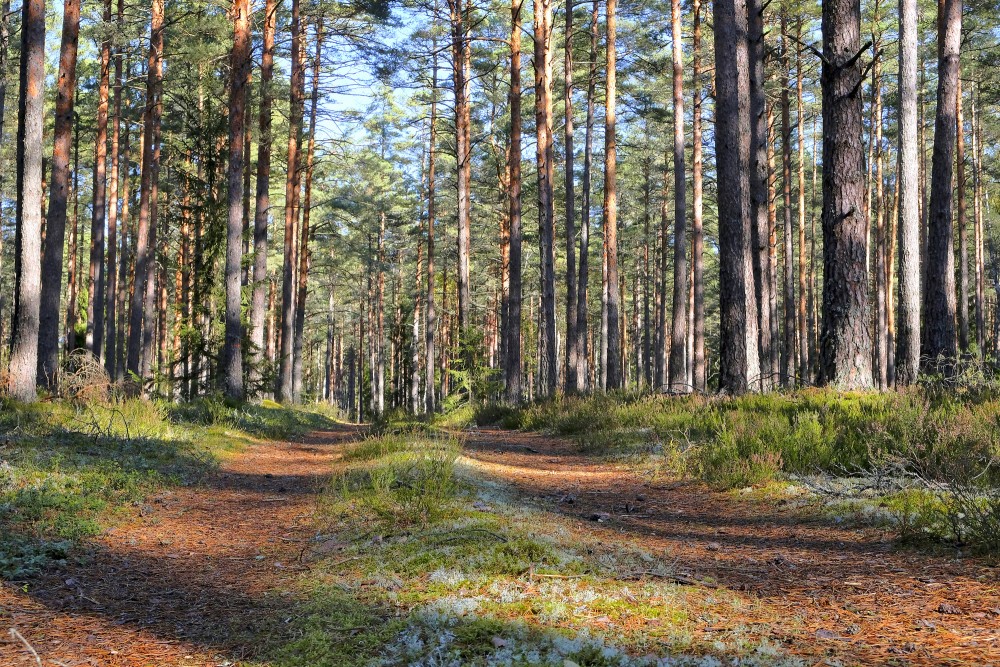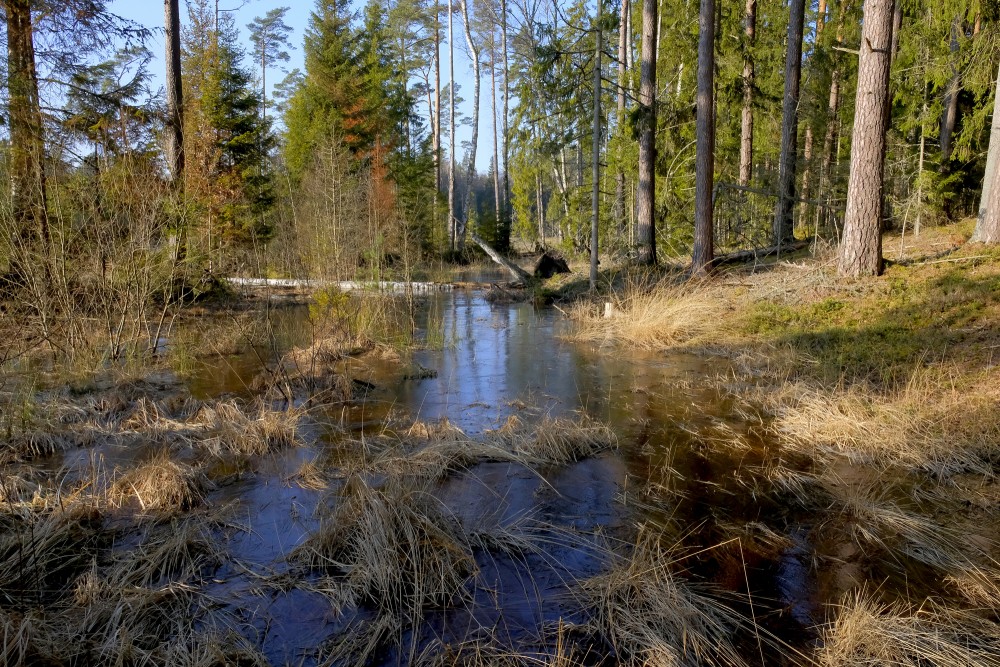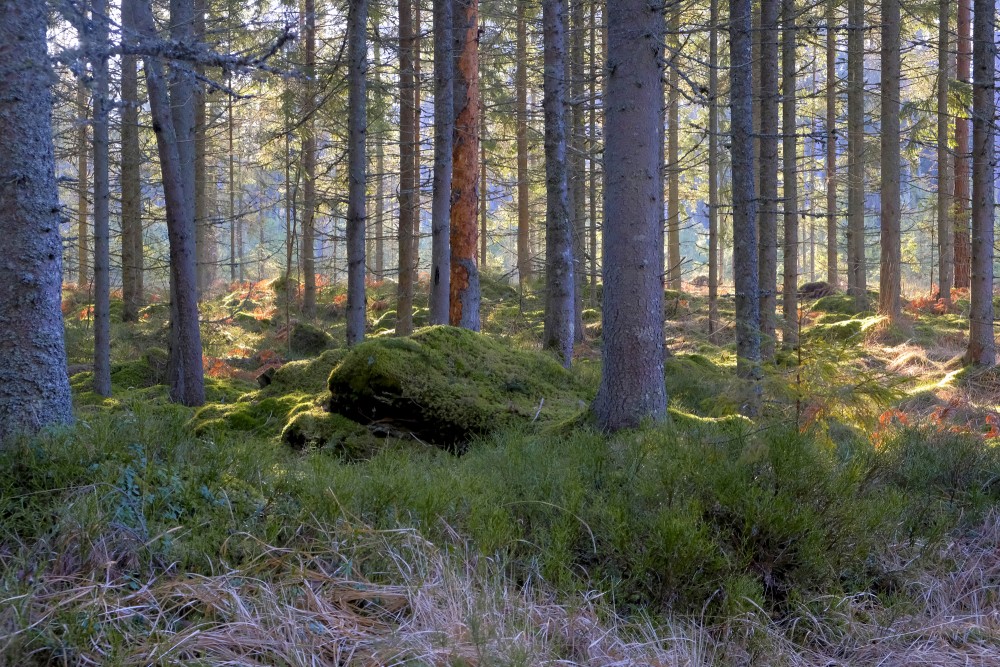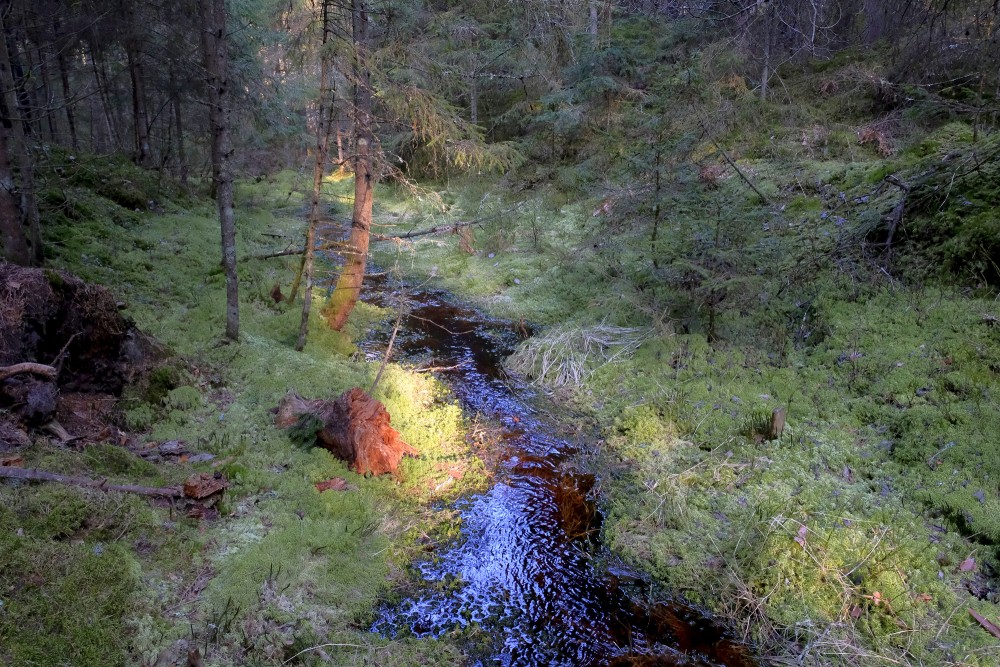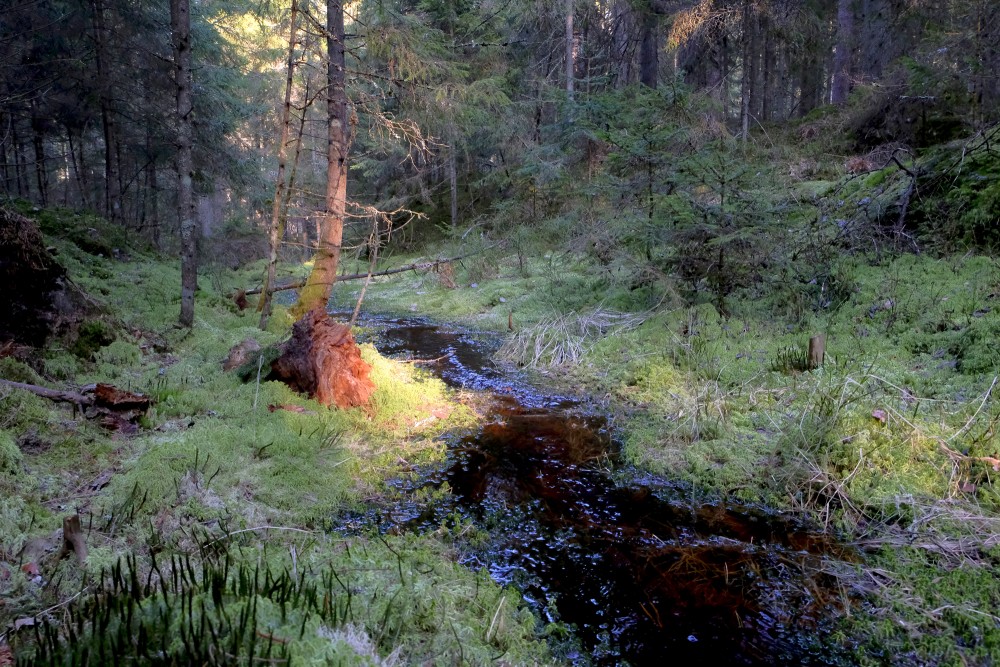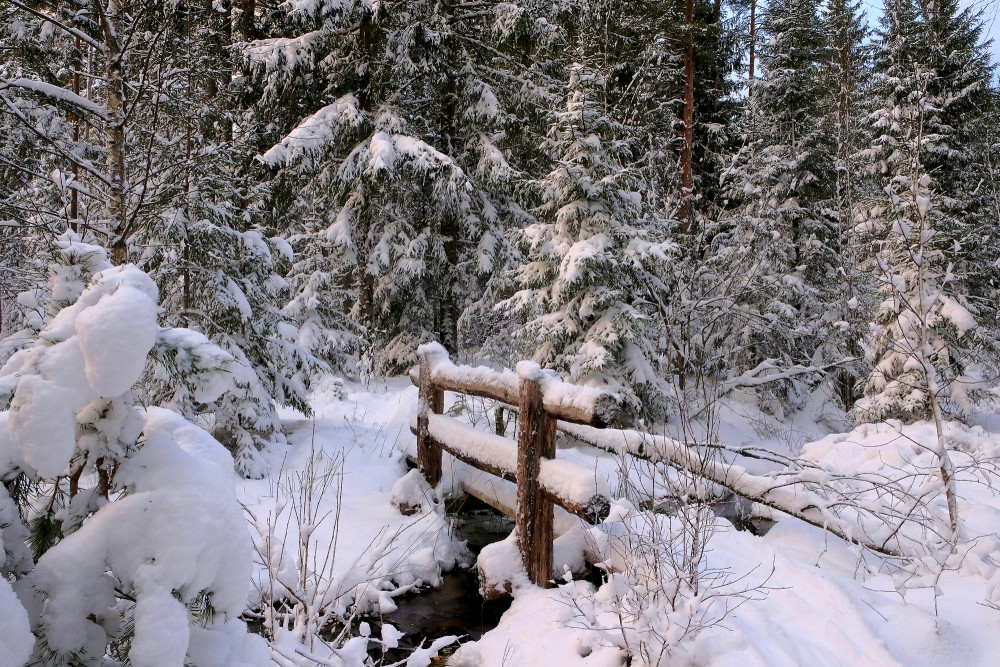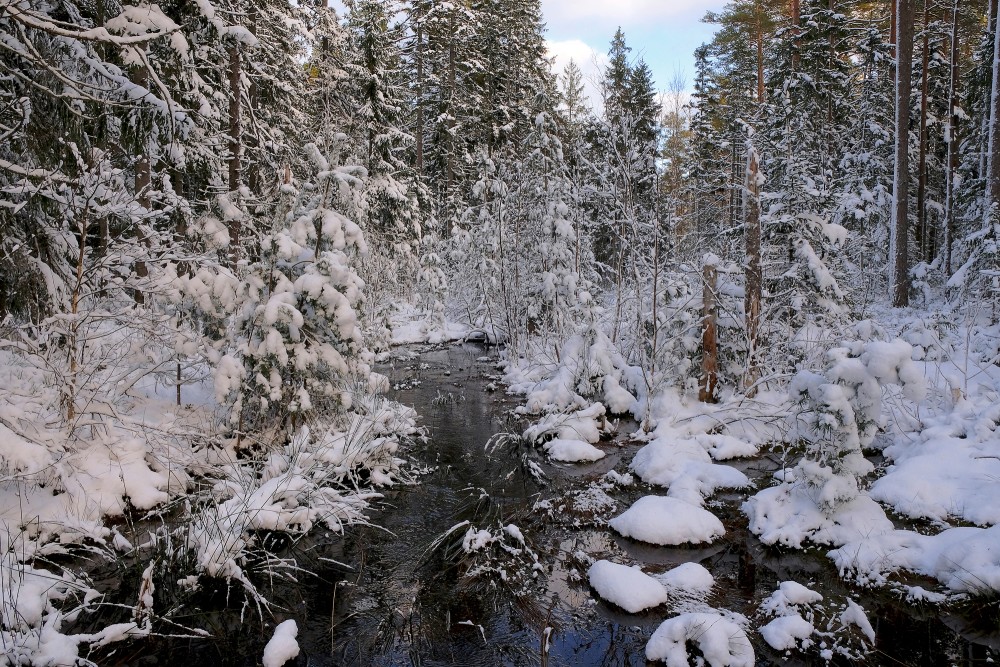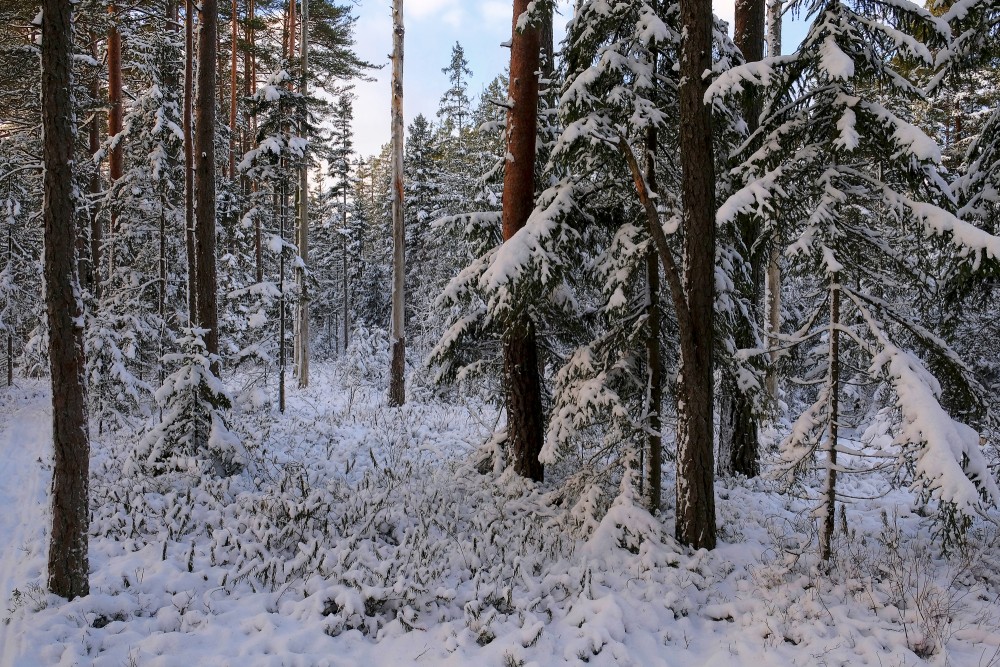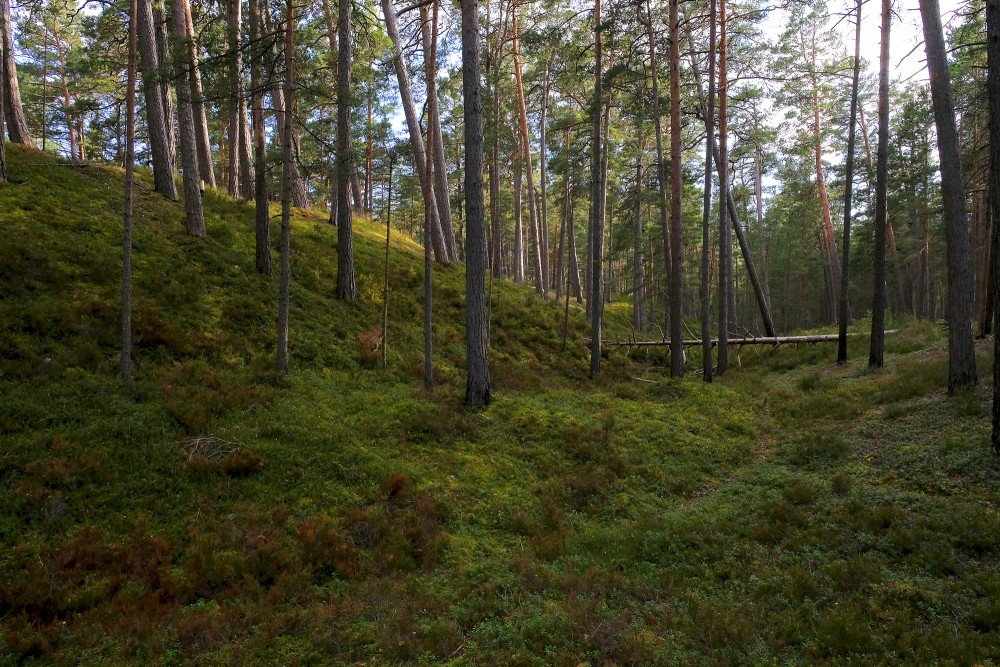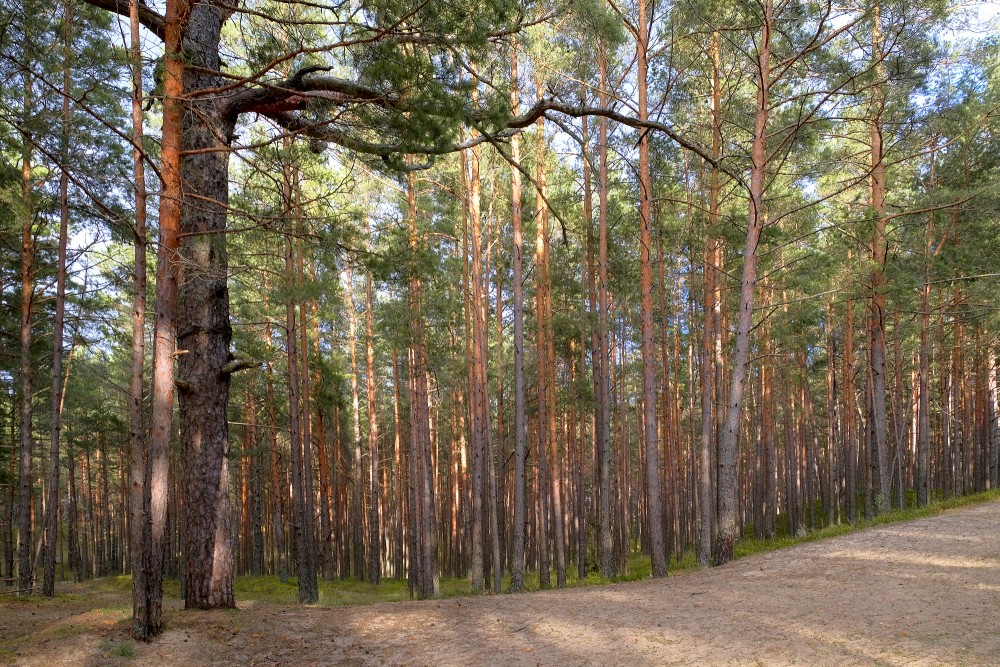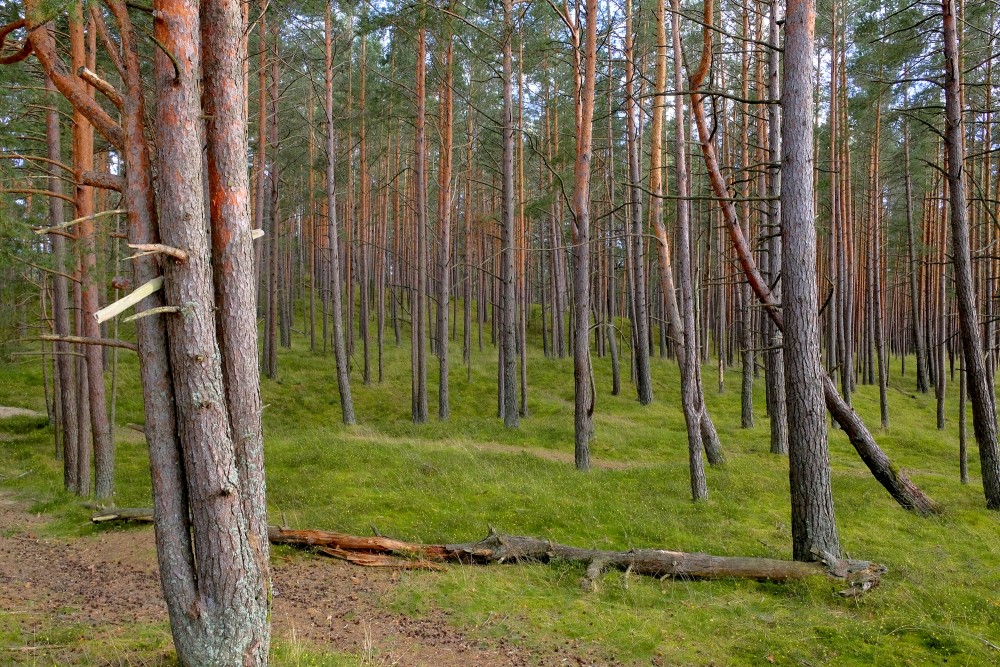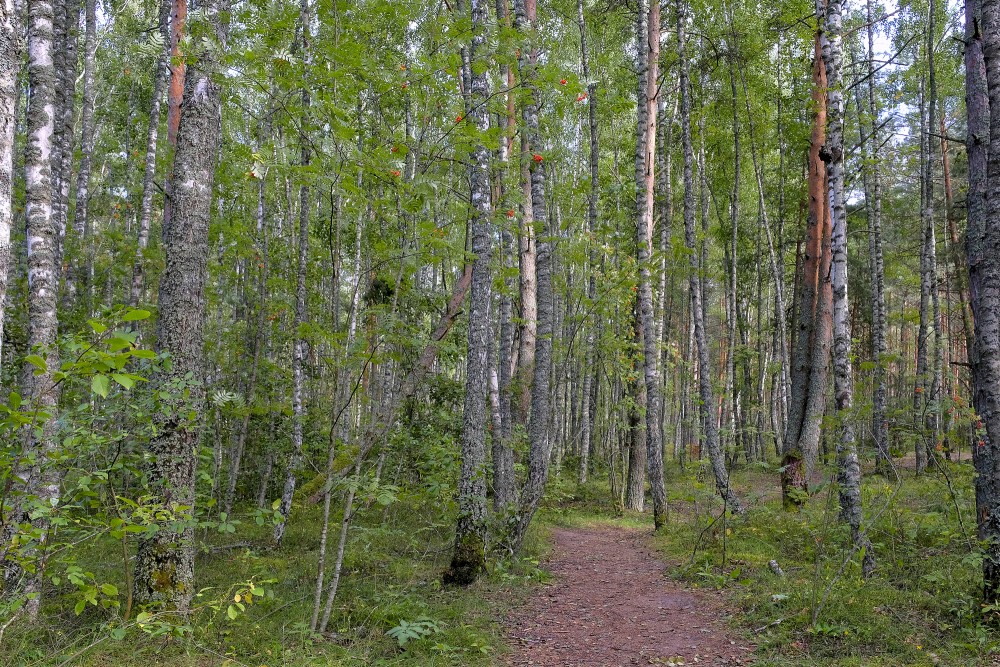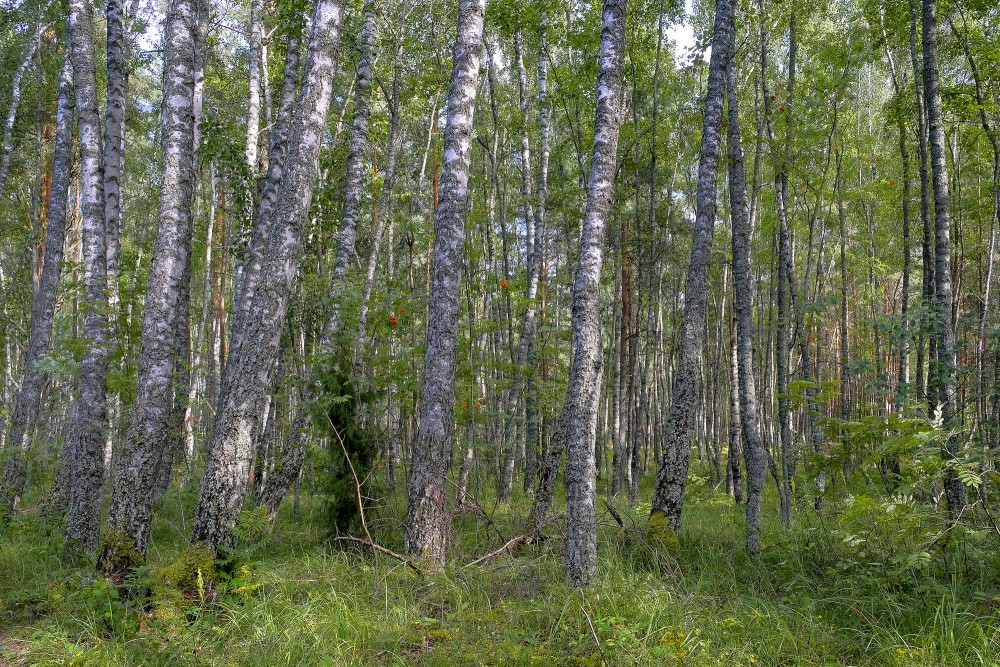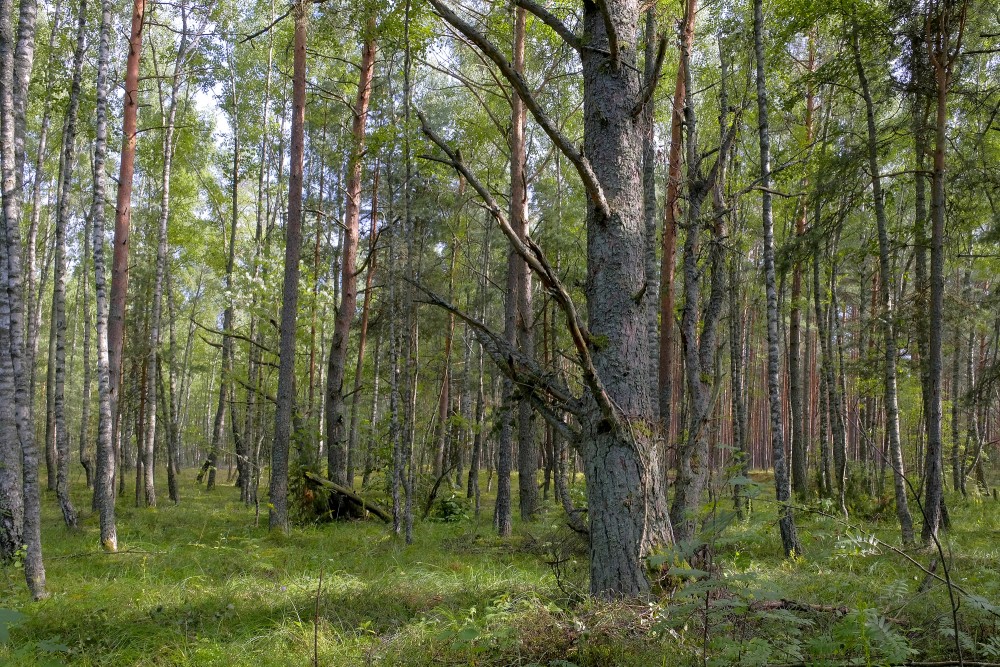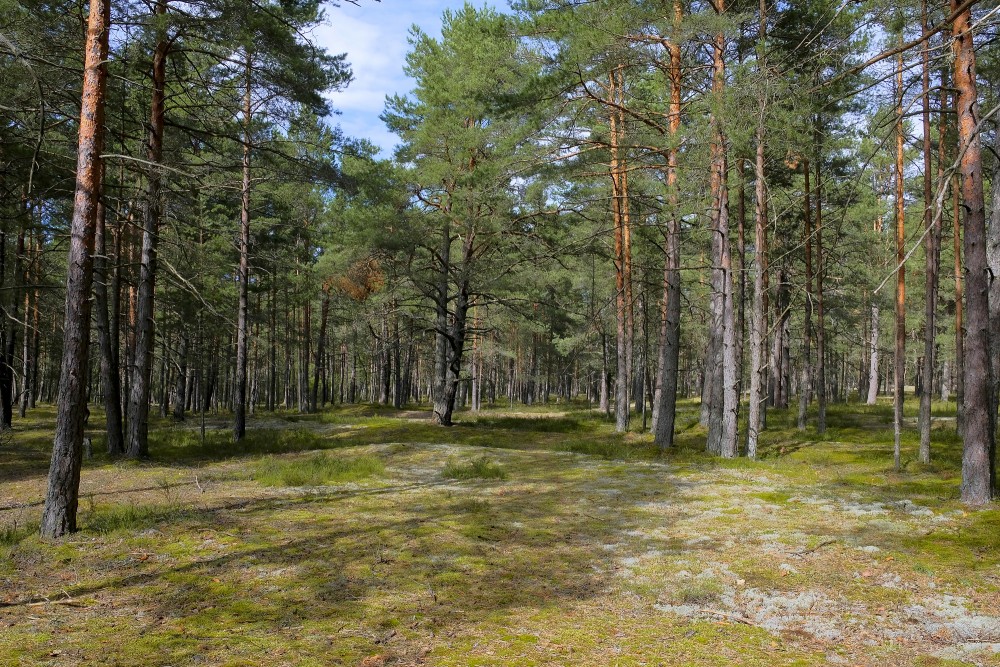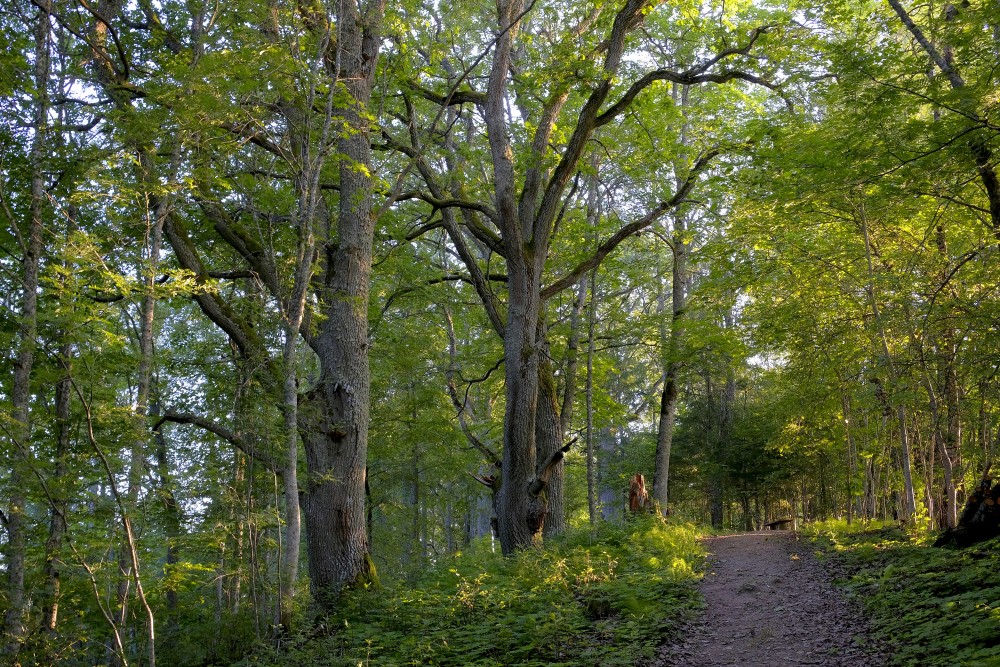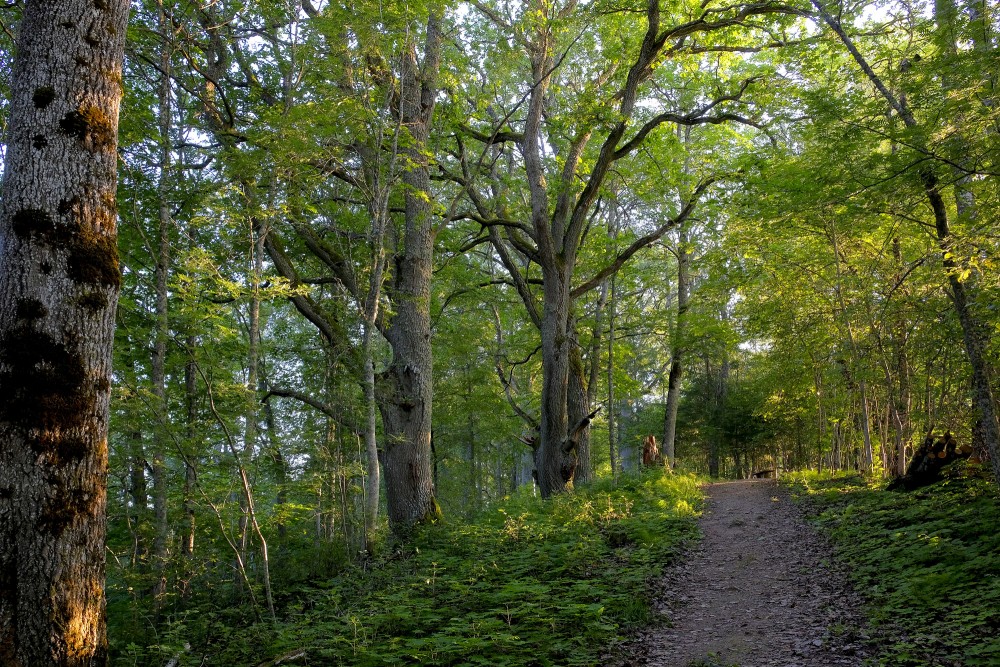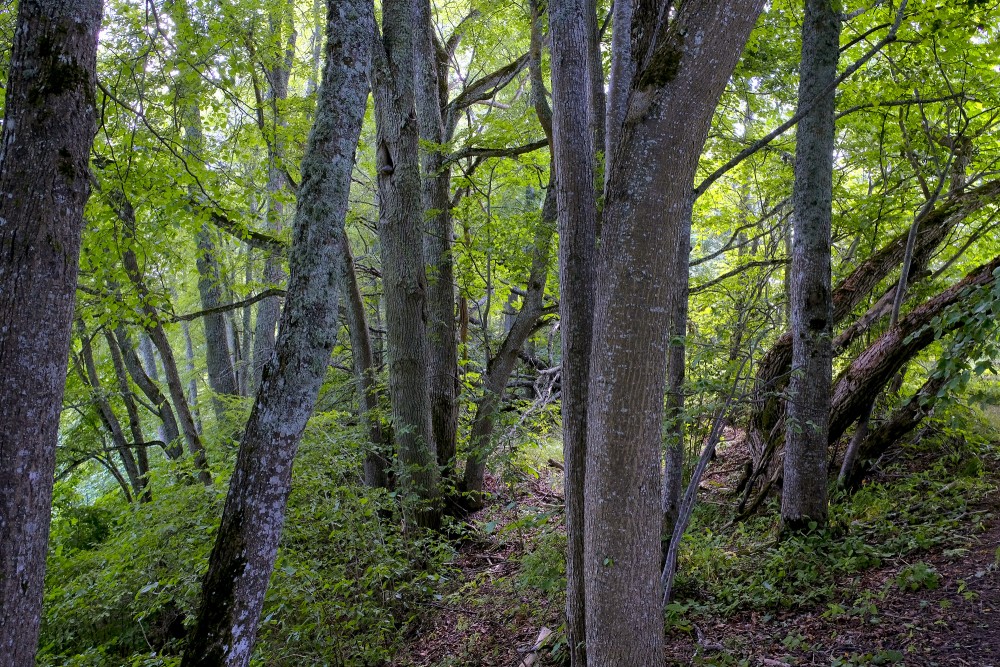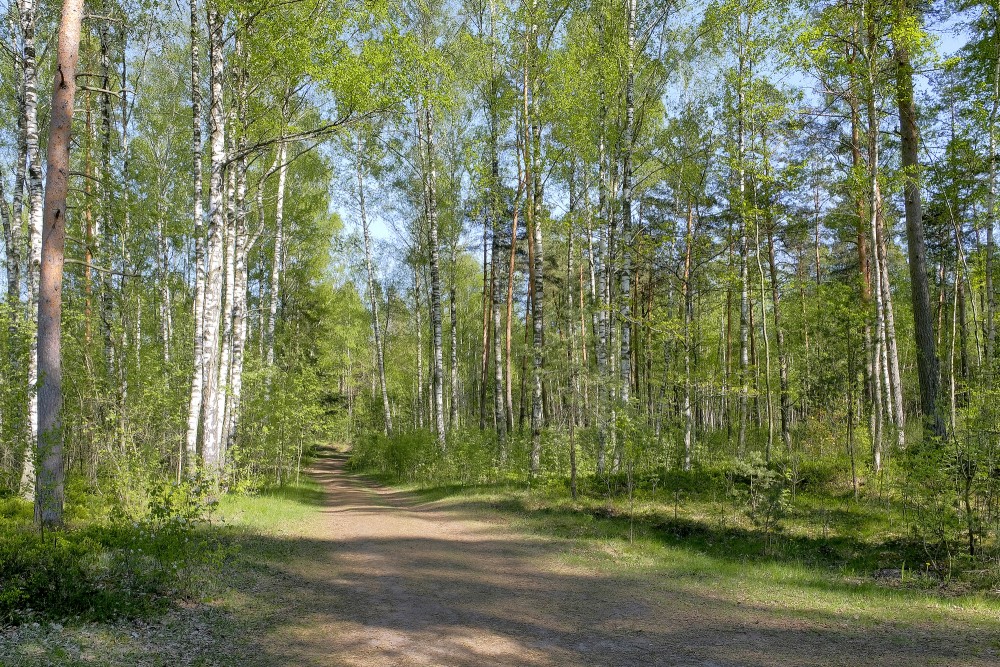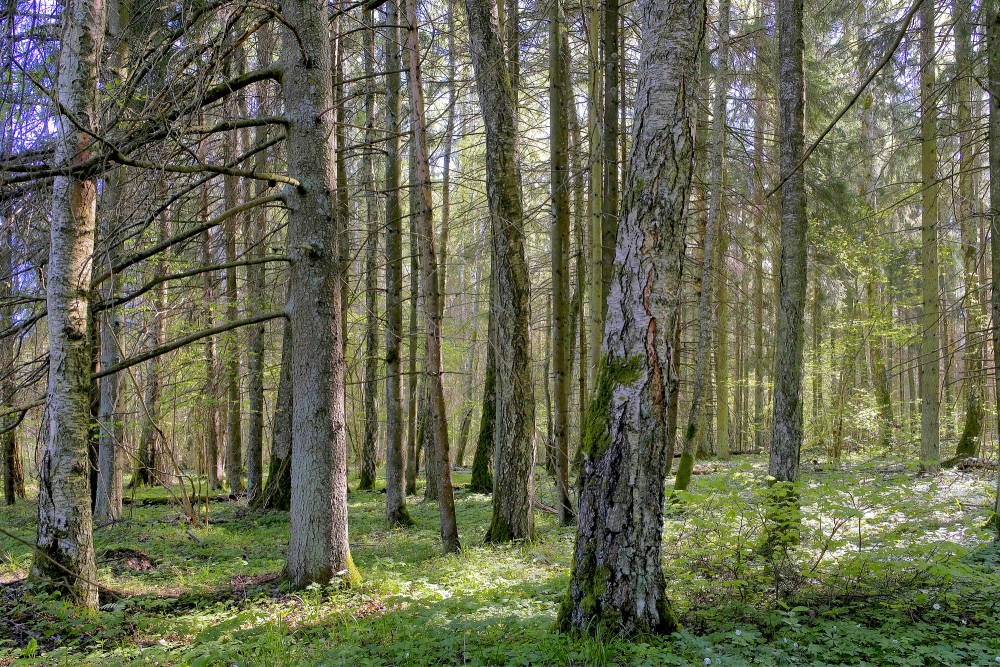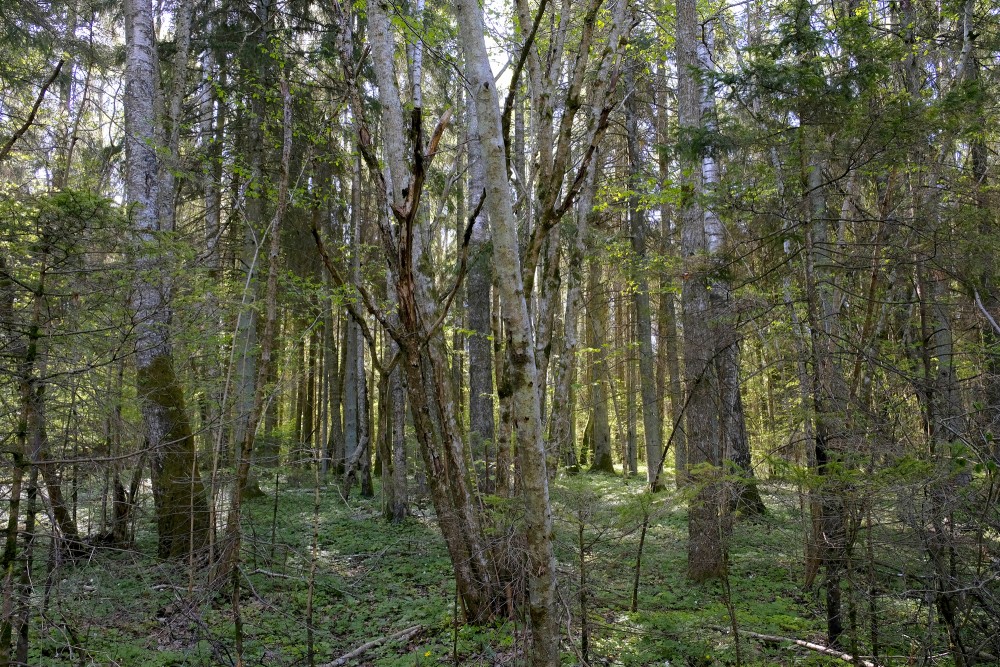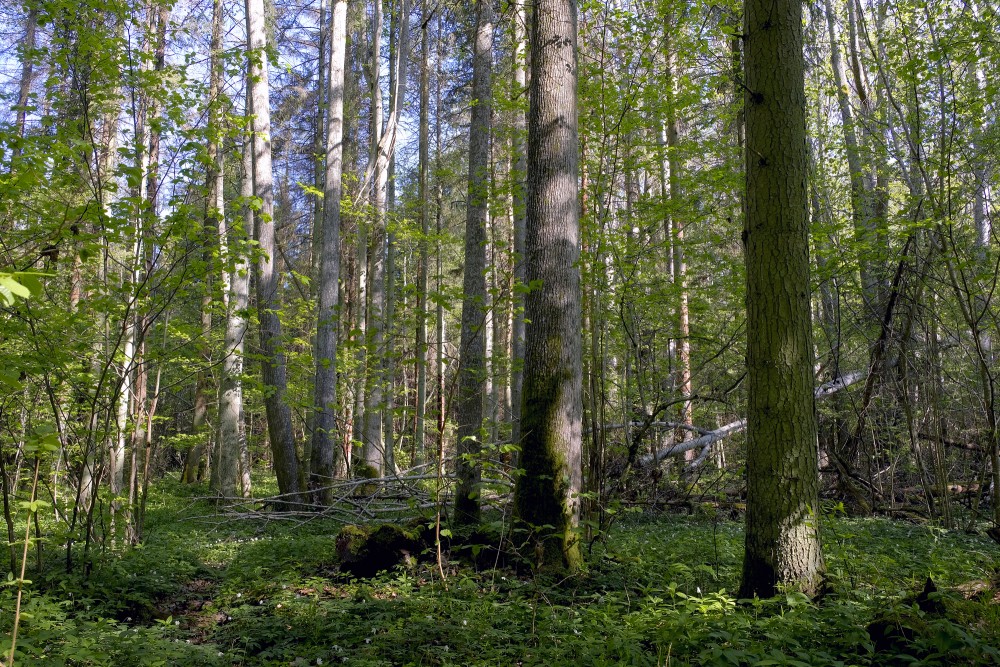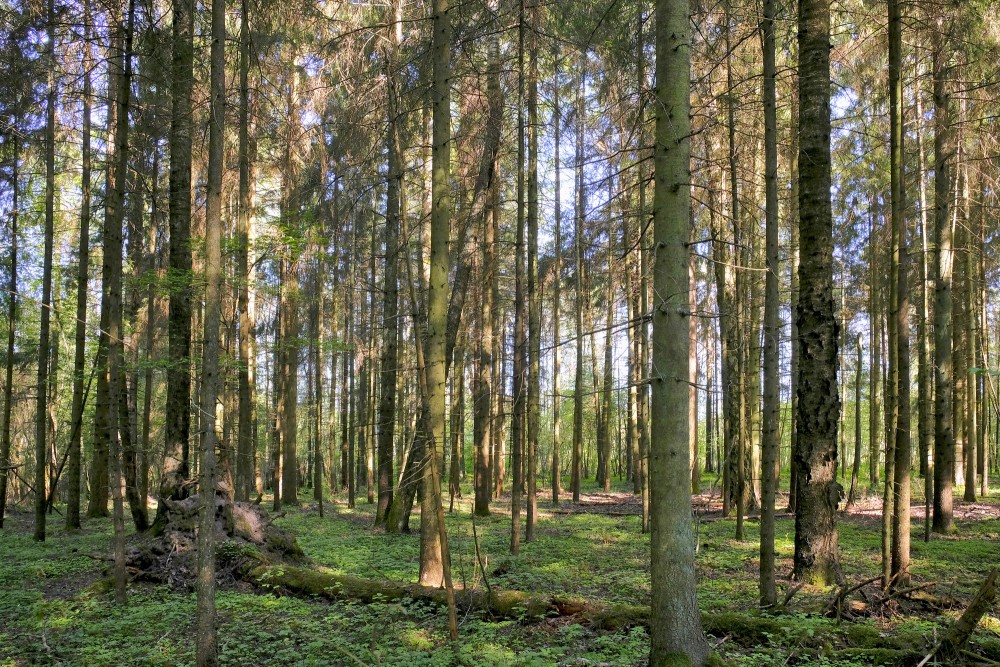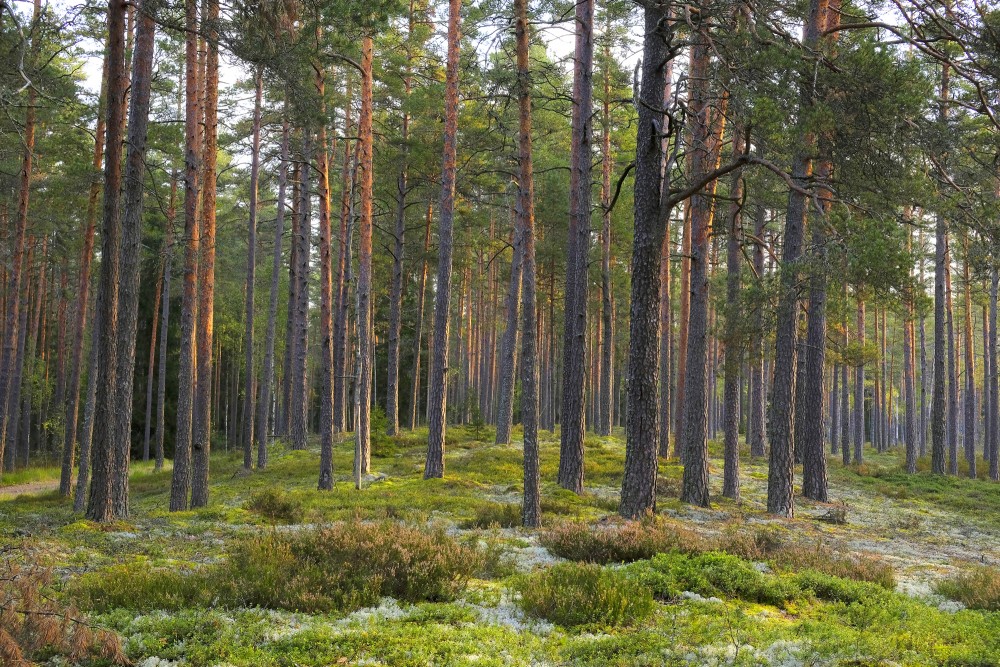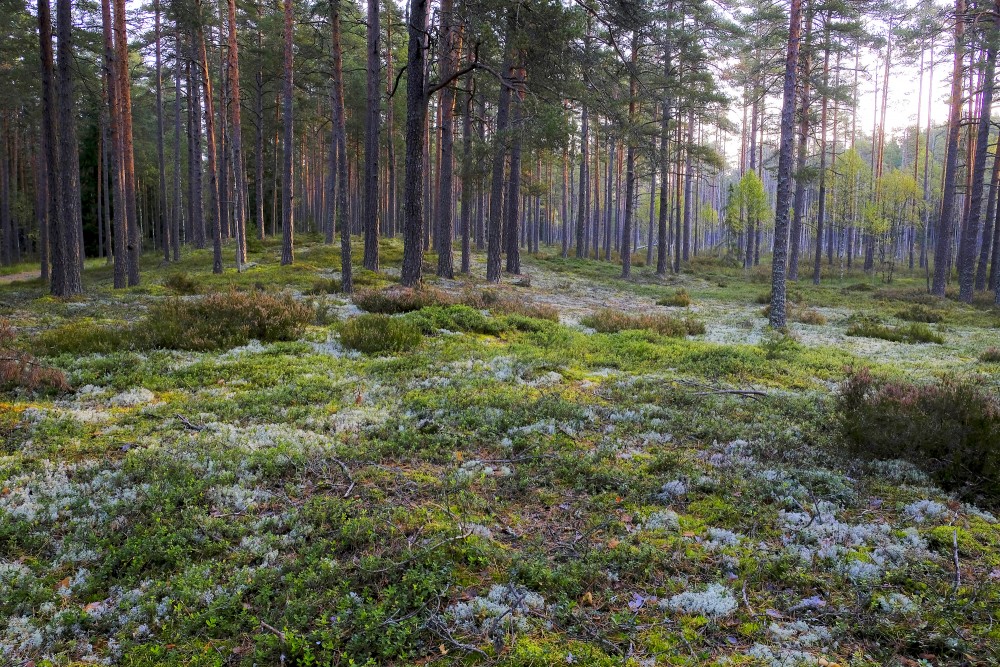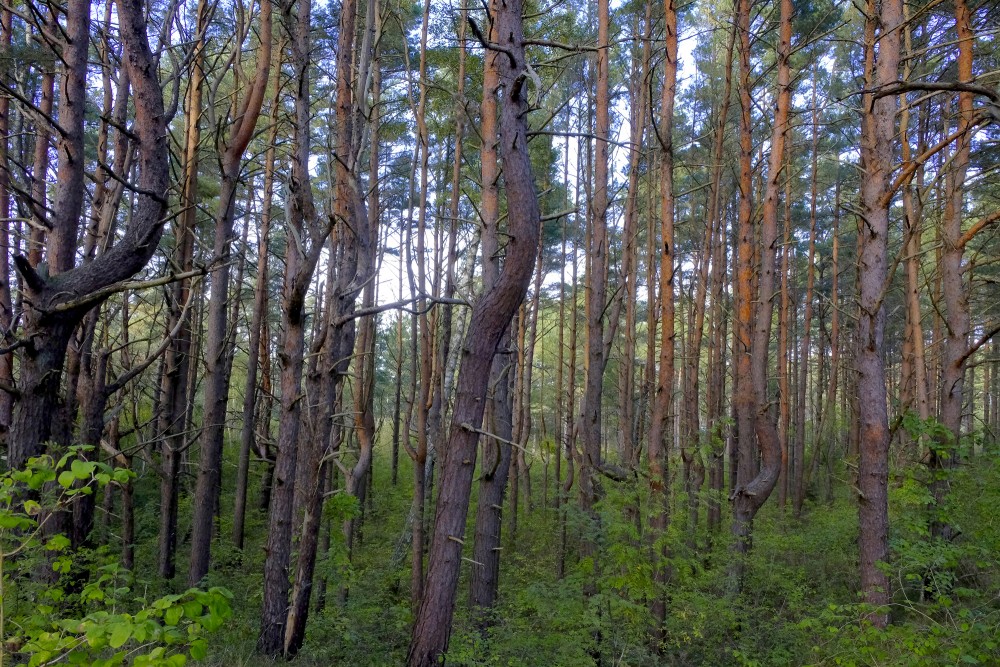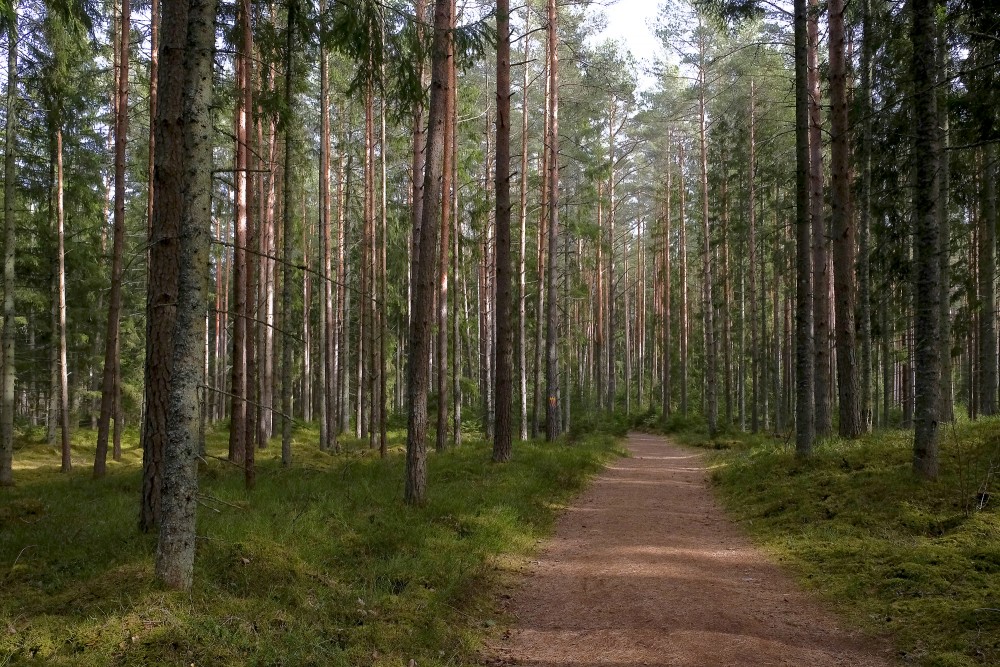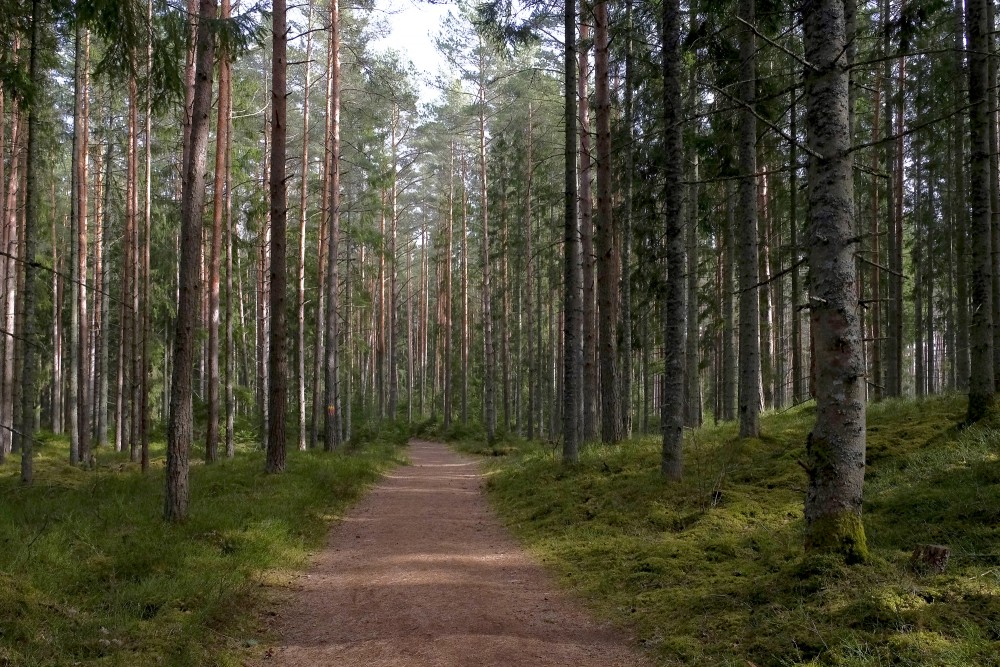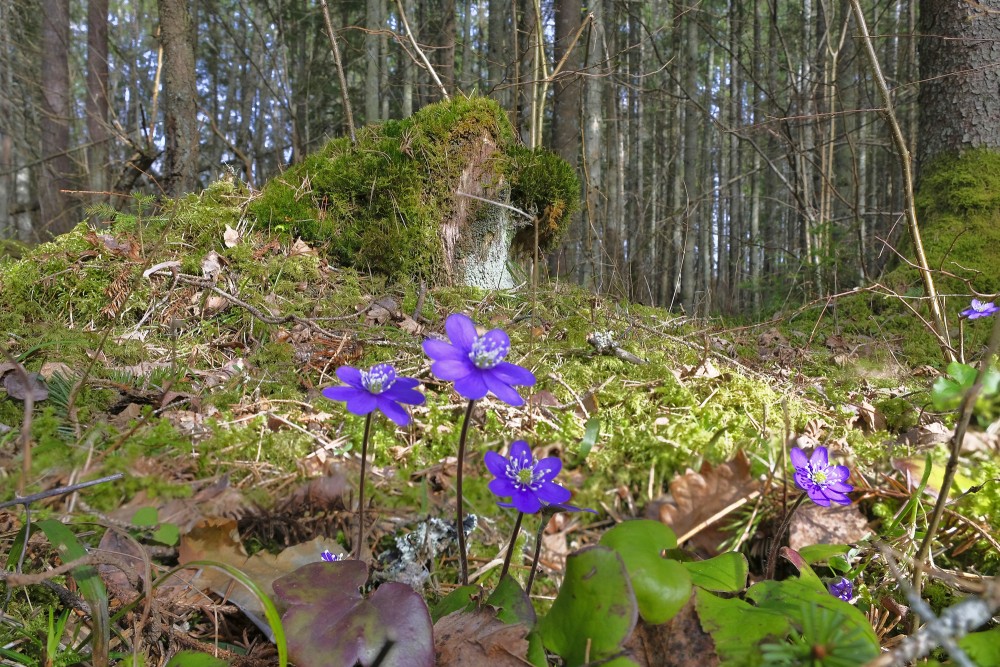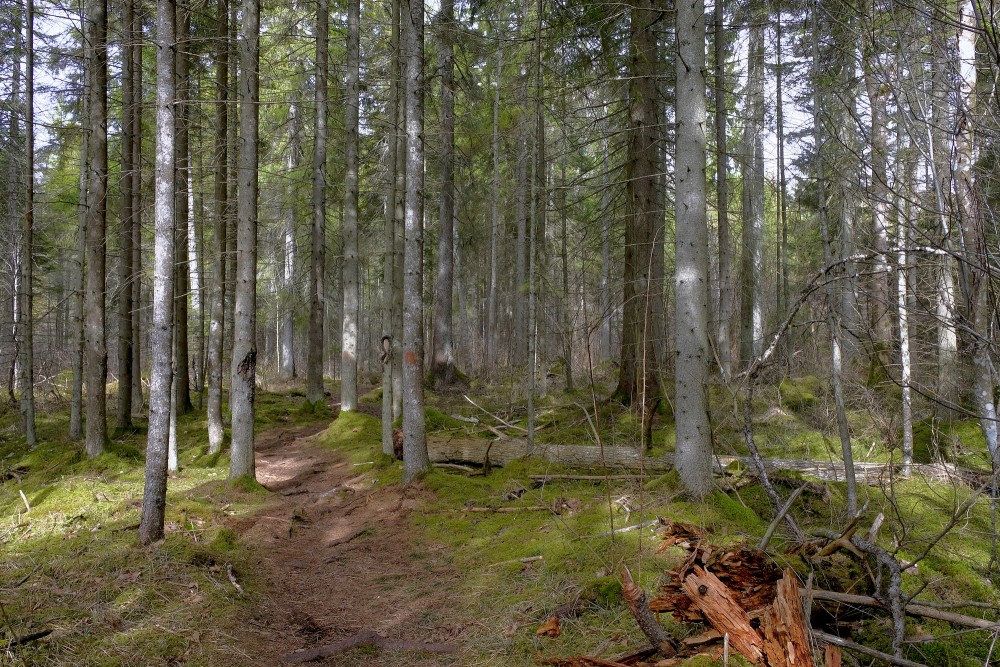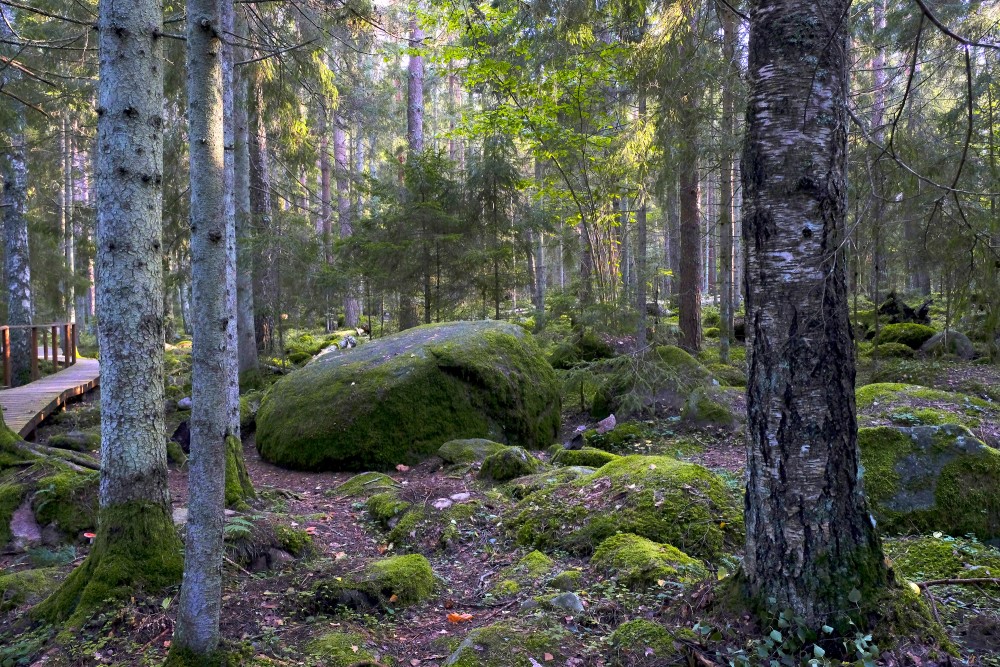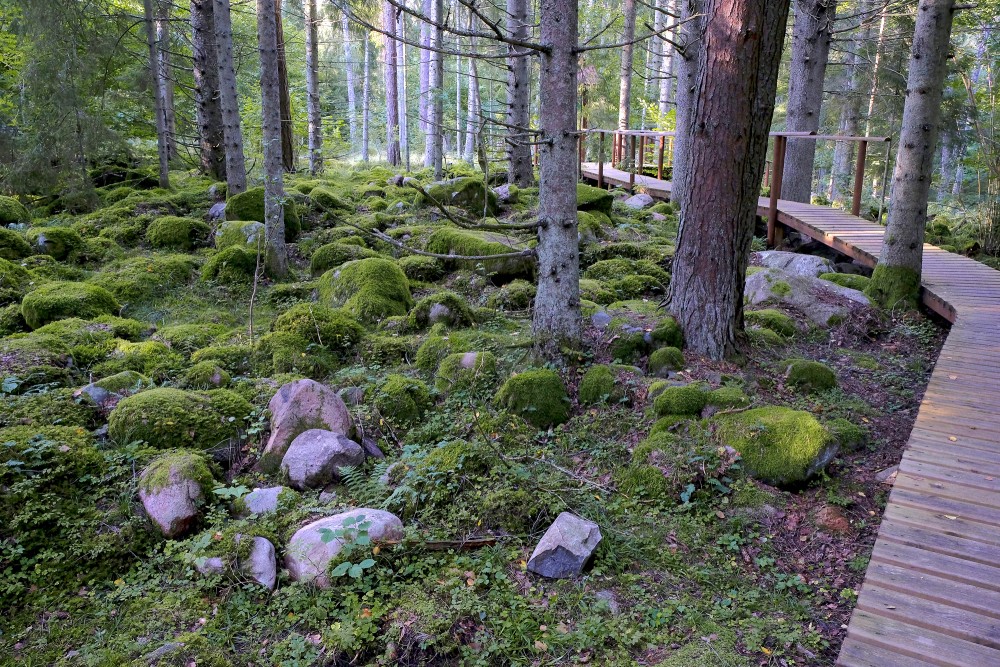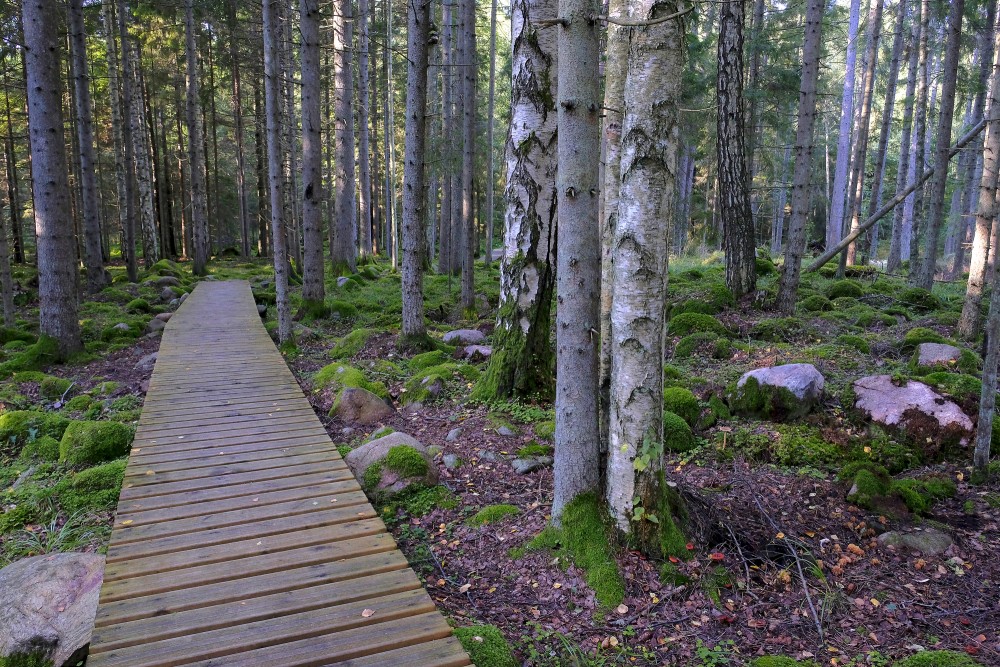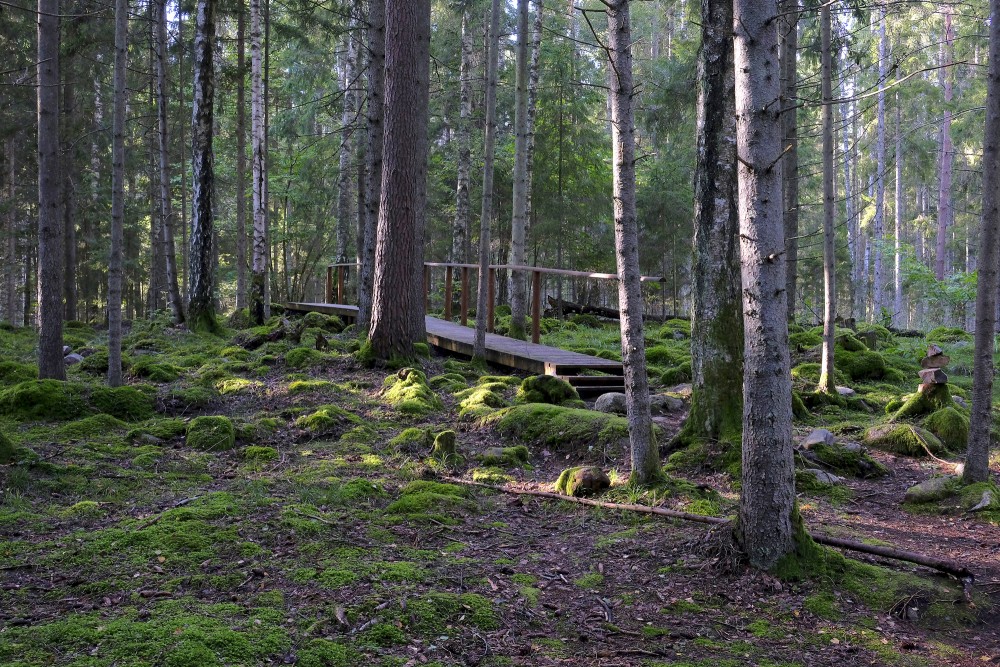Forest Landscape
A forest is a large area dominated by trees. Hundreds of more precise definitions of forest are used throughout the world, incorporating factors such as tree density, tree height, land use, legal standing and ecological function. According to the widely used Food and Agriculture Organization definition, forests covered 4 billion hectares (9.9×109 acres) (15 million square miles) or approximately 30 percent of the world's land area in 2006.
Forests are the dominant terrestrial ecosystem of Earth, and are distributed across the globe. Forests account for 75% of the gross primary productivity of the Earth's biosphere, and contain 80% of the Earth's plant biomass. Net primary production is estimated at 21.9 gigatonnes carbon per year for tropical forests, 8.1 for temperate forests, and 2.6 for boreal forests.
Forests at different latitudes and elevations form distinctly different ecozones: boreal forests near the poles, tropical forests near the equator and temperate forests at mid-latitudes. Higher elevation areas tend to support forests similar to those at higher latitudes, and amount of precipitation also affects forest composition.
Human society and forests influence each other in both positive and negative ways. Forests provide ecosystem services to humans and serve as tourist attractions. Forests can also affect people's health. Human activities, including harvesting forest resources, can negatively affect forest ecosystems.
en.wikipedia.org
